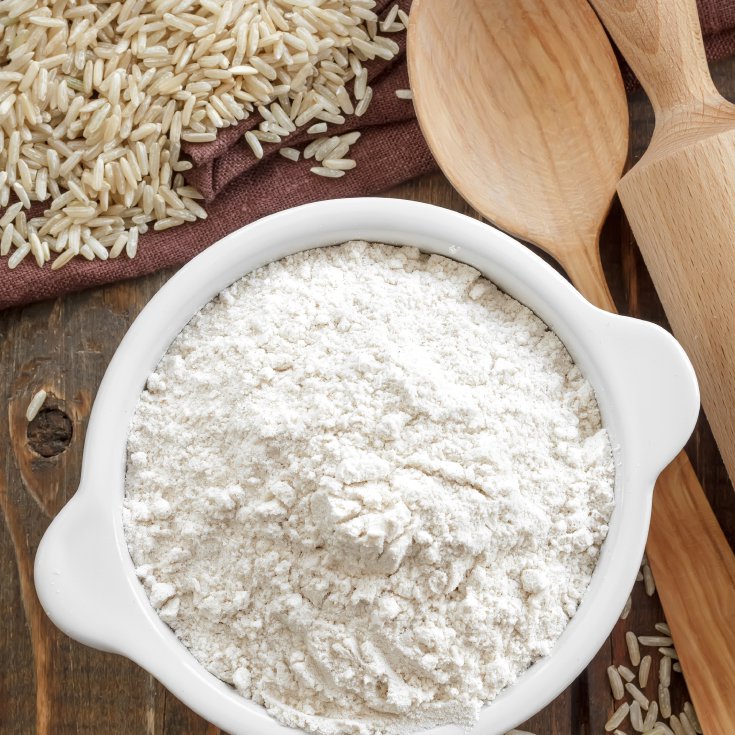
May 08, 2018
ARLINGTON, VA -- Trends show that both in the restaurant and at home, chefs are increasingly using rice flour to fry foods. Frying doesn’t have to involve a thick, heavy batter that creates a greasy, bready crust. Substituting rice flour for wheat flour in practically any fried food is a refreshing alternative that is weightless, crispy, and tender.
Though it’s been recently popularized in the U.S., the technique of frying with rice flour is universal. In Asia, it’s used in everything from Japanese tempura vegetables to Korean fried chicken, lending Asian fried foods their characteristic pillowy crunch. It also has a strong presence in Italian cooking, where chefs use finely-ground arborio rice to make such classic dishes as Tuscan-style fried chicken, calamari fritti, and the region’s signature breaded zucchini, thinly sliced and sautéed in olive oil.
Stateside, rice flour has been used in Southern-style cooking for generations. In the Carolinas and the Deep South in the 19th century, rice flour, then just a by-product of the mills, was often cheaper and more available than wheat flour. Some versions of Creole dumplings and pancakes are still made with rice flour.
But it’s rice flour’s frying qualities that put it in the spotlight. Lifestyle guru Martha Stewart has a recipe for Korean-inspired fried chicken with a rice-flour batter, and celebrity chef Bobby Flay introduced a fish and chips recipe using rice flour and panko breadcrumbs that rivaled classic English recipes on his show Throwdown! with Bobby Flay. Flay claimed rice flour was a “secret weapon” that he uses in many fried recipes for a nice, light batter.
Even many of your favorite fast food French fries - yes, the perfect, golden, crispy fries you know and love so well - are dusted with rice flour before frying to give them that characteristic, satisfying crunch. Burger King, Jack in the Box, and Carl’s Jr./Hardees all use rice flour on their French fries.
The benefits of frying with rice flour aren’t all aesthetic; it’s healthier, too.
“Rice flour absorbs less oil than other flours while frying, resulting in fewer calories from fat and a less oily product,” says Mike Manno, research and development chef at CSSI, a foodservice agency. In a study conducted by the Southern Regional Research Center, part of the U.S. Department of Agriculture’s Agriculture Research Service, chicken drumsticks fried in rice flour absorbed up to 62 percent less oil than those fried in traditional breading flour.
Frying with rice flour is also a perfect alternative for people with celiac disease or gluten intolerance who still want to occasionally enjoy a good plate of chicken wings - which happens to be Manno’s favorite way to utilize the unique properties of rice flour.
“I got sick and tired of the same old chicken wings, so I decided to try something different,” Manno said. He first poaches the wings and lets them cool, then coats them in seasoned rice flour. “Rice flour is so versatile. It’s a blank canvas you can season any way you want.”
Once the wings are fried to crispy perfection, Manno tosses them with sticky-sweet Asian sauce and sprinkles something to add texture on top, like sesame seeds. “Rice flour is a really fun way to make something crispy and crave-able, even for people with dietary restrictions.”
If you’re frying with rice flour at home, Manno recommends you use smaller pieces of meat and vegetables, since rice flour is finely ground and browns faster than wheat flour.
And you don’t always have to make a tough choice when frying, either. “A lot of chefs tend to blend traditional wheat or cornstarch batters with rice flour these days,” says Manno. “Not only does it lighten the batter up, but it also reduces some of that gumminess you get with wheat.”
One last editorial recommendation, if you’re feeling adventurous: try dusting your bacon lightly in rice flour before frying in a pan or baking in the oven. The result is shockingly crisp, juicy, and evenly cooked. The rice flour makes the outside of the bacon perfectly crunchy, while soaking up just enough of the bacon grease to keep it juicy on the inside.